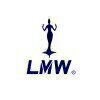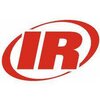Filter interviews by
Shakti Pumps Interview Questions and Answers
Shakti Pumps Interview Experiences
29 interviews found
I applied via Referral and was interviewed before Jul 2022. There were 4 interview rounds.

(2 Questions)
- Q1. Tell me about yourself
- Ans.
I am a dedicated Safety Officer with extensive experience in workplace safety, risk assessment, and compliance management.
Experience: Over 5 years in safety management, implementing safety protocols in manufacturing environments to reduce incidents by 30%.
Risk Assessment: Conduct regular risk assessments and audits, identifying potential hazards and developing strategies to mitigate them.
Training: Developed and deliver...
- Q2. What is your roles and responsibility
(3 Questions)
- Q1. HIRA, AI, Legal, PTW, LOTO
- Q2. Trainings, induction, TBT,
- Q3. Iso 45001, 9001, 14001
(1 Question)
- Q1. Salery negotiate, early joining etc
Interview Preparation Tips
I applied via Newspaper Ad and was interviewed in Oct 2024. There were 3 interview rounds.
I have believed on my skills to face challenge and good communication skills,hostest to my work soo grant me one chance for pove mt self
Good communication skills
(4 Questions)
- Q1. Leadership quality is most important
- Q2. Are you coming next 5 year which position
- Q3. Tell me about yourself
- Q4. 2weakness and 2 strongest point
- Ans.
My two strongest points are problem-solving skills and attention to detail. My weaknesses include public speaking and time management.
Strong problem-solving skills - able to analyze complex issues and come up with effective solutions
Attention to detail - meticulous in ensuring accuracy and precision in work
Weakness in public speaking - struggle with speaking confidently in front of large audiences
Weakness in time manag...
Interview Preparation Tips
- Basis electronic component
- PCB Designing
- PLC
Hostely work on our skills
Increase knowledge
Clam ourselves
(1 Question)
- Q1. Nothing asked only hurry to fulfilled the position
Interview Preparation Tips
I appeared for an interview in Apr 2025, where I was asked the following questions.
- Q1. Who are you Shakti pumps.?
- Q2. Who are you family baiground….?
- Ans.
The are 5 member are family.my mother and father.and yoger sister or brother.and me.
- Q3. You are the thought Shakti pumps....?
- Ans.
My thought is very good quality product.long tream apportunity .better team work apportunity. I am sinsier team work on company.
- Q4. You are the company vistion .....?
- Q5. You are the person thought company baground ....?
- Ans.
You are company start in 1983.you are company dirciter respected Mr.dinesh sir patidar.you are product sales all word .your excelant product quality.
- Q6. You are the perpas Shakti pumps.?
- Q7. You are the the thought Shakti pumps
Interview Preparation Tips
I appeared for an interview in Mar 2025, where I was asked the following questions.
- Q1. What are your strength
- Q2. What is the motivstion
- Ans.
Motivation drives individuals to pursue goals, overcome challenges, and achieve personal and professional growth.
Intrinsic motivation: Pursuing personal interests, like a passion for renewable energy.
Extrinsic motivation: Seeking recognition or rewards, such as promotions or bonuses.
Goal-oriented: Setting specific targets, like completing a project ahead of schedule.
Overcoming challenges: Using setbacks as learning opp...
Interview Preparation Tips
I applied via Company Website and was interviewed in Apr 2024. There was 1 interview round.
(1 Question)
- Q1. Electric motor winding process
I applied via Approached by Company and was interviewed in Mar 2024. There was 1 interview round.
(2 Questions)
- Q1. What are the previous projects you've worked on?
- Q2. About technical skills
(1 Question)
- Q1. Inward,GRN, issue,store inventory
(1 Question)
- Q1. How to measure power in motor if overloaded with the other application
- Ans.
Power in a motor can be measured by monitoring the current drawn by the motor and the voltage supplied to it.
Measure the current drawn by the motor using a clamp meter or a current sensor
Measure the voltage supplied to the motor using a multimeter
Calculate the power using the formula: Power (W) = Voltage (V) x Current (A)
Compare the calculated power with the rated power of the motor to determine if it is overloaded
Interview Preparation Tips
I applied via Approached by Company and was interviewed before Dec 2023. There was 1 interview round.
Time ki value and security ki knowledge
Interview Preparation Tips
I applied via Naukri.com and was interviewed in May 2023. There were 4 interview rounds.

(1 Question)
- Q1. Agile and scrum in details
- Ans.
Agile and Scrum are project management methodologies focused on iterative development and collaboration.
Agile is a methodology that promotes adaptive planning, evolutionary development, early delivery, and continuous improvement.
Scrum is a framework within which people can address complex adaptive problems, while productively and creatively delivering high value products.
Scrum roles include Product Owner, Scrum Master,...
Technical and management chellanges and resolution
(1 Question)
- Q1. Salary and other benifits discussion
Interview Preparation Tips
Skills evaluated in this interview
Top trending discussions






Shakti Pumps Interview FAQs
The duration of Shakti Pumps interview process can vary, but typically it takes about less than 2 weeks to complete.
Tell us how to improve this page.
Shakti Pumps Interviews By Designations
- Shakti Pumps Junior Executive Interview Questions
- Shakti Pumps Territory Manager Interview Questions
- Shakti Pumps Designer Interview Questions
- Shakti Pumps Management Trainee Interview Questions
- Shakti Pumps Accountant Interview Questions
- Shakti Pumps R&D Engineer Interview Questions
- Shakti Pumps Finance Executive Interview Questions
- Shakti Pumps Area Sales Manager Interview Questions
- Show more
Interview Questions for Popular Designations
- Senior Executive Interview Questions
- Software Engineer Interview Questions
- Software Developer Interview Questions
- Business Analyst Interview Questions
- Associate Software Engineer Interview Questions
- Accountant Interview Questions
- System Engineer Interview Questions
- Manager Interview Questions
- Show more
Overall Interview Experience Rating
based on 22 interview experiences
Difficulty level
Duration
Interview Questions from Similar Companies
Shakti Pumps Reviews and Ratings
based on 306 reviews
Rating in categories
|
Assistant Manager
84
salaries
| ₹3.8 L/yr - ₹9 L/yr |
|
Area Sales Manager
60
salaries
| ₹2.5 L/yr - ₹6.7 L/yr |
|
Executive
51
salaries
| ₹2.5 L/yr - ₹5 L/yr |
|
Senior Executive
47
salaries
| ₹3 L/yr - ₹8 L/yr |
|
Deputy Manager
38
salaries
| ₹5.2 L/yr - ₹10.2 L/yr |

Thermax Limited

Kirloskar Oil Engines

Lakshmi Machine Works

Skipper
- Home >
- Interviews >
- Shakti Pumps Interview Questions













